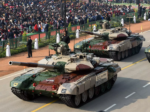Saudi Arabia’s Vision 2030: A Transformation Amidst Challenges

Image source: LinkedIn
Saudi Arabia is in the midst of an unprecedented transformation that has the potential to reshape the most powerful kingdom in the Gulf. For nearly a century, the nation’s economy has been heavily reliant on its vast oil riches. However, the introduction of Vision 2030, spearheaded by the ambitious 38-year-old Crown Prince Mohammed Bin Salman (MBS), is set to revolutionize the entire economic landscape, diversify revenue streams, and pave the way for a promising future for the nation’s youthful population. Despite facing international scrutiny, controversy, and human rights accusations, Saudi Arabia continues to exert its influence on the global stage, investing billions of dollars in various sectors, ranging from sports to media and entertainment. In this article, we delve deeper into Saudi Arabia’s economic transformation, its challenges, and the strategies employed to secure its future.
An Economy in Boom Mode
Like many nations, Saudi Arabia’s economy suffered a setback when the COVID-19 pandemic struck in 2020. However, since then, the kingdom has experienced a remarkable recovery. In a significant milestone, its GDP soared past $1 trillion last year, marking the first time it crossed this threshold. Per-capita output also surged to $30,436, demonstrating a remarkable 50% increase in just two years, as per World Bank data. The growth phase, which propelled Saudi Arabia to the position of the G20’s fastest-growing economy last year, was fueled by higher global energy prices and a robust 4.8% non-oil GDP growth, primarily driven by sectors such as construction and transport, as reported by the IMF.
Oil Still Holds Sway
While Saudi Arabia is actively working to reduce its economic dependence on oil, crude oil remains a dominant force in its economic landscape. An 8.7% economic expansion in the previous year was primarily driven by surging oil prices. Saudi Aramco, the majority state-owned oil giant that raised $25.6 billion in its 2019 IPO, recorded a record profit of $161 billion last year, up from $110 billion in 2021. Despite the global shift towards renewable energy, the resilience of oil demand persists. Nevertheless, Saudi Arabia is committed to increasing the share of non-oil exports in non-oil GDP from 18.7% to an ambitious 50%.
Financial Investments Abound
Saudi Arabia has opened its coffers, making substantial investments both domestically and internationally. The Public Investment Fund (PIF), the nation’s powerful sovereign wealth fund led by MBS and fund governor Yasir Al-Rumayyan, is the driving force behind these investments. PIF has been involved in high-profile deals, including Saudi Arabia’s takeover of Newcastle United and the LIV Golf merger with the PGA Tour. In August, the fund reported assets under management exceeding 2.23 trillion riyals ($594 billion) in 2022, with nearly a quarter of those assets allocated internationally.
A Youthful Population
Saudi Arabia boasts a young and growing population. With a total population of 32.2 million, the nation’s median age is 29, according to Saudi Arabia’s General Authority for Statistics. The population has expanded by a third in just 13 years, with over half of Saudi citizens being under 30, as per a 2022 census reported by Reuters. Harnessing the potential of this youthful workforce is a top priority for MBS, who aims to diversify the economy and create opportunities for young Saudi workers.
A Hub for Foreign Nationals
Saudi Arabia, like several other countries in the Arab States region, is a magnet for foreign nationals. Just over 40% of the kingdom’s total population consists of non-Saudis. The nation has long relied on migrant labor, particularly in sectors such as agriculture and domestic services. However, it has faced criticism from international groups regarding the treatment of migrant workers, including certain exclusions from national labor law protections. The country reported an unemployment rate of 5.1% in the first quarter of this year, with an average overall employment participation rate of 61.7%. This rate breaks down into 52.4% for Saudi nationals and 75.2% for non-Saudis. Notably, Saudi women face a higher unemployment rate, with 15.7% among those aged 25 to 54, compared to a mere 3.5% for men in the same age bracket.
Place in the Gulf States
Saudi Arabia’s economic growth is mirrored to some extent by its Gulf State counterparts. Kuwait and the United Arab Emirates have also registered rapid economic growth, underlining the shared reliance on oil and gas revenues in the Gulf region. Saudi Arabia’s GDP last year was the largest in the Arab League, surpassing even that of the UAE. However, the kingdom’s GDP per capita, as reported by the IMF, falls below figures recorded for Qatar, the UAE, and Kuwait.
Strategic Investments in Sports and Entertainment
Notably, Saudi Arabia has garnered international attention with high-profile investments in sports and entertainment. The kingdom has spent $830 million on football transfers alone this summer, making headlines by attracting football stars like Neymar, Cristiano Ronaldo, Karim Benzema, and others to its Pro League. These astronomical sums, while serving as a source of controversy and criticism related to human rights issues, reflect a broader strategy to diversify revenue streams. These investments are part of a comprehensive transformation aimed at securing Saudi Arabia’s economic future amid the anticipated decline in oil revenues.
Vision 2030: A Transformative Vision
At the heart of Saudi Arabia’s transformation is Vision 2030, a project led by Crown Prince Mohammed bin Salman. This visionary plan seeks to reduce the nation’s dependence on oil, open up the country to diverse economic opportunities, and secure a sustainable future. While Saudi Arabia made attempts to attract international football talent in the 1970s, these efforts were largely unstructured and unsustainable. Today, the approach is radically different, reflecting a clear government strategy and significant investments across various sectors.
In a Race Against Time
Saudi Arabia faces a pressing challenge to diversify its economy and secure its financial future. As a leading member of OPEC, Riyadh recognizes that world consumption of oil will peak around 2040, causing oil revenues to stagnate and decline. The nation is in a race against time, as noted by Simon Chadwick, a professor of sport and geopolitical economics. He emphasizes the need for Saudi Arabia to act quickly, strategically, and effectively to diversify its economy to withstand oil price fluctuations.
Bread and Circuses of the 21st Century
The significant investments in sports, entertainment, and other sectors serve a dual purpose. They not only diversify the economy but also aim to meet the demands and aspirations of a population that has long been deprived of such entertainment. While critics may point to concerns about repression and human rights violations, many see these investments as a means to provide the people with the entertainment and opportunities they desire.
In conclusion, Saudi Arabia’s Vision 2030 represents a bold and ambitious plan to transform the nation’s economy and secure its future in the face of changing global dynamics. The kingdom’s strategic investments in various sectors, including sports and entertainment, underscore its commitment to diversify revenue streams and create opportunities for its youthful population. While challenges and controversies persist, the transformation underway in Saudi Arabia reflects a determined effort to adapt to a rapidly evolving world and ensure the nation’s continued relevance on the global stage.
Team Profile

- News Writer
- Harshit Tokas is a Political Science and International Affairs Post-Graduate with a passion for understanding and analyzing complex political landscapes. Skilled in research, data analysis, and policy development. Eager to contribute his knowledge and insights to drive positive change.
Latest entries
 English1 December 2023Ambati Rayudu Backs Ruturaj Gaikwad as a Future Leader of Indian Cricket
English1 December 2023Ambati Rayudu Backs Ruturaj Gaikwad as a Future Leader of Indian Cricket English1 December 2023Changing Tide: Pujara and Rahane Omitted from South Africa Tour Squad
English1 December 2023Changing Tide: Pujara and Rahane Omitted from South Africa Tour Squad Defence1 December 2023India Greenlights Procurement of Advanced Military Assets in Multi-billion Defence Upgrade
Defence1 December 2023India Greenlights Procurement of Advanced Military Assets in Multi-billion Defence Upgrade English1 December 2023Delhi Government Pushes for Completion of Asia’s Largest Wastewater Treatment Plant
English1 December 2023Delhi Government Pushes for Completion of Asia’s Largest Wastewater Treatment Plant









